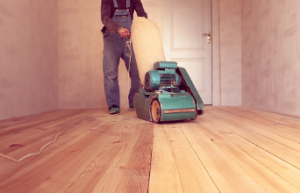Tips for Floor Sanding and Polishing a Hardwood Floor
Before you begin, purchase a quality sander with several grits. You will typically start with 40 grit. Then, remove all furniture and other items that need to be covered and protected during the sanding process. You should also check for nails and countersink them before moving up a grit. Sanding floors can create a lot of dust, so make sure to remove all nails before you start.
 Using a dust extractor
Using a dust extractor
If you’re preparing to use a dust extractor for floor sander and polisher work, you should start by considering the type of filtering system used. Most dust extractors can collect about 99% of airborne dust particulates. If your project requires a HEPA filter, purchase a unit with this type of filter. The dust tank should be easy to empty and at least 50 pounds.
The Ermator S36 HEPA Dust Extractor is a powerful unit suitable for medium-sized planetary floor grinders. Its massive filters contain over 50 square feet of media and are built in a cone shape for reduced dust loading. In addition, the ER-S36 Dust Extractor comes with a HEPA filter and a vacuum meter. The dust extractor is portable and can be used anywhere.
Using a belt sander
When floor sanding and polishing Adelaide hardwood floor, there are several important things to remember when using a belt sander. First, make sure that the floor is level. Ideally, it would help if you sanded at an angle of seven to fifteen degrees to the wood grain. If you have a floor that has uneven boards, sand them at a steeper angle than the rest of the floor.
Next, you must buff the floor to remove any rough spots. The final stage of the sanding process involves buffing. The grit sequence you use to polish the floor will vary depending on the type of wood you’re working with. For example, resinous woods may require coarser and more frequent grit changes. The NWFA publishes a Technical Manual A200 on floor polishing outlining grit changes.
Avoiding a 36-grit sandpaper granule caught under a 60-grit belt
When polishing a wood floor, you should avoid getting a sandpaper granule trapped under a 60-grit belt. This can cause an ugly gash on your floor. However, you can avoid this occurrence by defining your sanding sequence beforehand and skipping one grade in between. In this article, we’ll show you how to do this.
The first step in sanding a wood floor is identifying which type of sandpaper to use. When polishing a wooden floor, choose a medium grit and low-grit sandpaper. Using a higher grit will smooth out any rough areas. Consult the floor sanding and polishing Adelaide professional.
Using a vacuum before moving up a grit
Before moving up a grit, use a vacuum cleaner to remove dust. The first grit, 120, leaves a shallow, uniform scratch pattern. Using this grit, you can fool your finish into thinking only one machine left the scratch pattern. After you’ve finished, you can move on to the next grit and polish the floor. Before moving on to the next grit, remember to vacuum twice to remove all dust and debris.
Preventing damage to a floor
If you’re sanding and polishing a wood floor, there are some things you should keep in mind. Furniture that isn’t properly protected can scratch or dent your new floor. This can lead to massive deductions on security deposits. In addition, damage to hardwood floors can result in floor repair services or flooring replacement. Thankfully, there are a few ways to avoid damage.
Before sanding a floor, inspect the perimeter with a flashlight. If there are visible scratches from edgers, remove them by hand with 80-grit sandpaper. Once you’ve finished sanding the floor, you can use a random orbital sander to blend the edges. If you’re unsure how to proceed, contact a licensed flooring expert for an estimate.
Using the right sandpaper grit
Before beginning, prepare the floor by removing any baseboards and heating grates. You can also remove old carpet tacks but leave baseboards in place. If possible, dust mop the floor before sanding. It will help if you repair any cracks or gaps you find before you begin the sanding process.